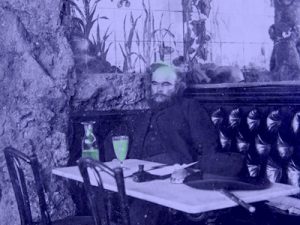Marcel Proust was born on July 10th, 1871 in Auteuil, France, a suburb of Paris. His father, a doctor well known for his work in epidermiology, was married to a stockbroker’s daughter of Jewish descent. Marcel was sick from the time he was born, and from the age of nine began suffering from severe asthma, which harmed his chances for a conventional professional career.
In the 1890’s he contributed sketches to magazines such as “Le Figaro” and “Le Banquet.” He published “Pleasures and Days,” a collection of short stories, poetry, and essays, in 1896. His very active social life led to acquaintances with members of the wealthy and aristocratic classes. In 1894, he began an affair with a pianist, Reynaldo Hahn, which prompted him to realize his homosexual tendencies, a realization that came with anguish.
In 1898, Emile Zola published a letter defending Colonel Dreyfus, who was facing charges of treason. Proust became known as “the first Dreyfusard,” an identification he welcomed. By the time Dreyfus was cleared of the charges, Proust’s social life was already shattered due to anti-Semitism and political hatred.
Proust spent time in a sanitorium in 1905, after the death of his mother. His health failing, he withdrew himself from society and devoted his time to writing. In 1913 he published a piece called “Swann’s Way,” which would turn out to be the first installment of a larger series that would become his masterwork.
Another installment, “Within a Budding Grove,” was published in 1919. This won the Goncourt Prize and, along with it, instanteous fame and recognition. “The Guermantes Way” and “Sodom and Gomorrah” were published in his lifetime before Proust passed away on November 18th, 1922. The reamining volumes in what was to become known as “In Search of Lost Time” (also known as “Remembrance of Things Past”) were published shortly after his death: “The Captive” in 1923, “The Fugitive” in 1925, and, finally, “Time Regained,” in 1927.
I have only read one book of his, “The Captive,” and I intend to start reading “The Fugitive” shortly. I don’t think he’s easy to read. I became aware of Proust after the second reading of Jack Kerouac’s “On the Road,” noticing that Dean Moriarty seems to be reading his works from time to time. Towards the end of the book, Sal imagines Dean to be reading it on a train while crossing the continent in search of him. It also seems to me, having read “The First Third” by Neal Cassady (the real-life figure upon which Dean Moriarty is based), that Neal followed the Proustian style and theory of writing.




